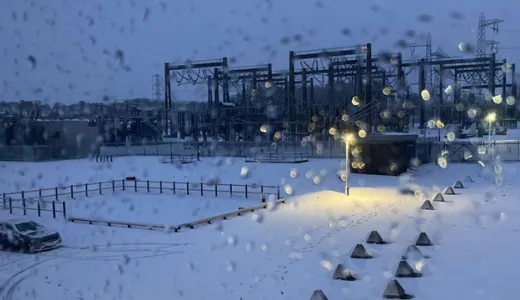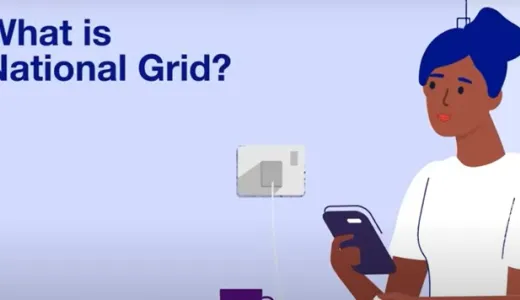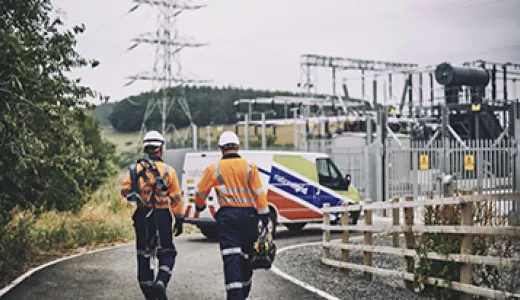While Great Britain’s electricity system is extremely reliable and resilient, power cuts – also known as power outages – can happen for a variety of reasons.
If you experience a power cut that you weren’t expecting you can report it by calling 105. This will connect you to your distribution network operator (DNO), who owns and maintains the power lines that connect to homes or businesses.
Looking for information about power cuts in the US? Visit the National Grid US website.
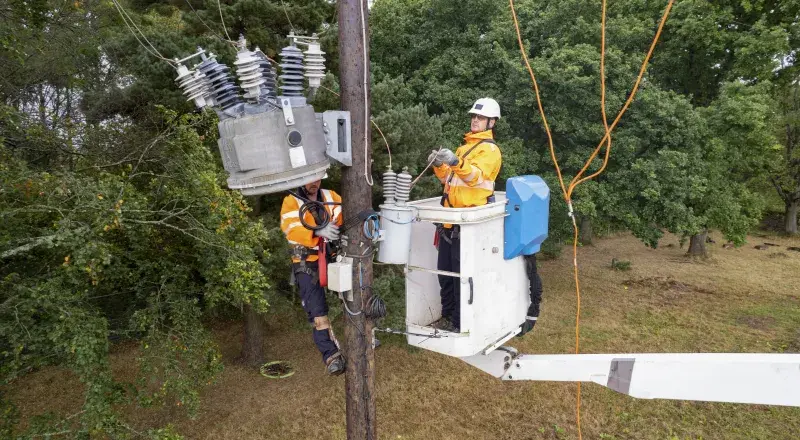
How we deal with power cuts
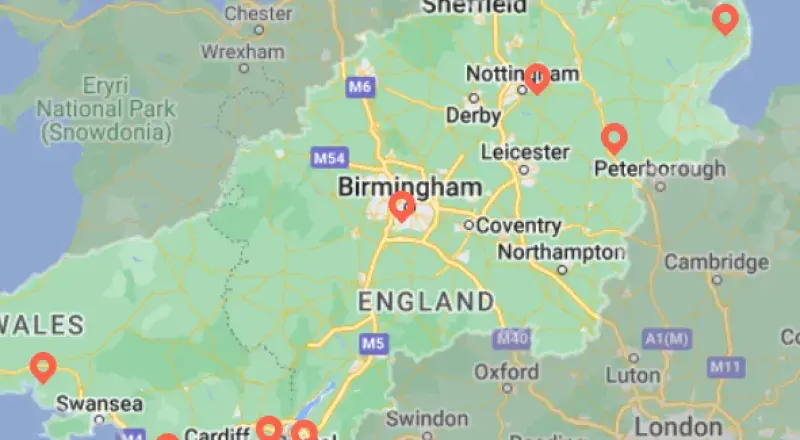
Power cut checker
See information about power cuts in your area with our live power cuts map.
If you live in the Midlands, South West England or South Wales, you can see live updates using the map or by entering your postcode.
If you live elsewhere in the UK, please contact your local network operator to report or track a power cut.

How to prepare for a power cut
Power cuts: Your questions answered
If you experience a power cut that you weren’t expecting, you can report it by calling 105. This will connect you to your distribution network operator (DNO), who owns and maintains the power lines that connect to homes and businesses.
If you live in the Midlands, South West England or South Wales, your DNO is National Grid. If you live elsewhere, you’ll have a different DNO.
You can find out who your DNO is by entering your postcode on the Energy Networks Association's website.
The National Energy System Operator (NESO) – who is responsible for ensuring there is enough power to meet demand – has signalled that it’s cautiously optimistic about this winter compared to last. The energy markets across Europe have responded, bolstering gas and electricity storage and supplies ahead of this winter.
Given the continued uncertainty presented by the invasion of Ukraine by Russia, the energy industry continues as usual to prepare and plan for a wide range of eventualities.
In the event there are periods where margins (the amount of supply available vs. the expected demand) are tight, there are a number of tools the NESO can use. These include increasing the amount of power being generated, asking large industrial customers to reduce the amount of power they’re consuming and paying customers – through their energy supplier – to use less energy at certain times.
Emergency power cuts are only implemented to protect the electricity network from more damage, which would be more disruptive for a much longer period. They are a last resort and wouldn’t affect everyone at the same time.
In addition, unplanned power cuts are a possibility every winter as these are often caused by unforeseen events such as extreme weather. In the case of this type of power cut, your local distribution network operator (DNO) will do their best to repair the issue and restore power as quickly as possible.
Power cuts can be due to a number of causes, and can be planned or unplanned.
Unplanned power cuts
These are usually caused by something unforeseen, such as extreme weather conditions.
Planned power cuts
These may be due to essential maintenance being carried out on the network by your local distribution network operator (DNO). DNOs own and maintain the power lines that connect to homes or businesses. If you live in the Midlands, South West England or South Wales, your DNO is National Grid. If you live elsewhere, you’ll have a different DNO.
Emergency planned power cuts – also known as rota load disconnections – can be implemented when the demand for electricity is greater than the levels that are available from electricity generators. These planned, controlled and temporary power cuts help to protect the integrity of the whole electricity system by temporarily disconnecting a small percentage of the network. In the case of rota load disconnections, the National Energy System Operator (NESO) would legally instruct DNOs to disconnect power supplies, following established procedures set out by the government in the Electricity Supply Emergency Code.
Planned power cuts may be due to essential maintenance being carried out on the network by your local distribution network operator (DNO). DNOs own and maintain the power lines that connect to homes or businesses. If you live in the Midlands, South West England or South Wales, your DNO is National Grid. If you live elsewhere, you’ll have a different DNO.
Unplanned power cuts are usually caused by something unforeseen, such as extreme weather conditions.
The energy networks can help if you have additional needs because of your medical or personal circumstances – just make sure you sign up to your local network operator’s Priority Services Register. This is a free service and each network operator keeps their own register.
Power cuts will also affect equipment such as stair lifts, bath hoists and adjustable beds. Make sure that any essential medical equipment has a battery back-up. This means you can keep using it, even if the power is out. Backup power supplies and associated equipment should be regularly checked and maintained by a competent person. If you're concerned, you should speak to your medical equipment or health care provider as soon as possible.
If you have a stair lift, check it has a manual release handle – you can use this to return the lift to the ground floor if you have a power cut.
You can find out more about compensation for power cuts by visiting the ENA website.
It's a good idea to think about what you can do now to prepare for a power outage, as well as things to do during one, to make things easier for you and your family.
Balancing the supply and demand of electricity is managed by the National Energy System Operator (NESO). Their analysts are constantly forecasting how much electricity we need, and their control room experts are in continuous communication with the electricity market.
If supply and demand can’t be matched through normal mechanisms, the NESO will send a formal message to the electricity market. These messages are sometimes referred to as system warnings or system notices. They’re a routine way that NESO communicates to the market and operates the system, and they don’t mean that electricity supply is at risk. It’s simply telling the market what is needed.
It’s important to note that the NESO does not disconnect the power in the event of a planned power cut. This is done by the distribution network operators (DNOs), who own and maintain the power lines that connect to homes or businesses.
There are two main types of notices:
1. Electricity Margin Notice (EMN)
If the normal safety margin for operating the system is not as big as the NESO would like, and they can’t address it through the usual mechanisms, then they would consider issuing an EMN. This doesn’t mean there isn’t enough electricity to meet demand; it just means NESO would like a larger cushion of spare capacity, and wants the market to provide it.
2. Capacity Market Notice (CMN)
If the safety margins for operating the system are reduced, a CMN might also be issued as an alert to providers in the capacity market. CMNs are triggered automatically four hours ahead of real-time, based on specific industry data about the system’s safety margin.
What’s the difference between an EMN and a CMN?
While EMNs and CMNs are based on the same fundamental data – for example generator availability and demand forecasts – they are issued based on different thresholds and lead times.
This means that EMNs and CMNs can sometimes be issued and active at different times. That’s normal – they are different signals being communicated to different parts of the electricity market.
Capacity market notices (CMNs) are triggered by an automated system. Their forecasts are issued automatically and are only based on information in the public domain. An improvement in generation availability in the hours after the automatic CMN has been issued will lead to the notice being withdrawn.
The Demand Flexibility Service allows energy suppliers to reward their customers for reducing their electricity use when demand is at its highest, therefore helping to balance the country’s supply and demand of electricity.
Find out if your energy supplier is participating in the Demand Flexibility Service
Taking care of the UK's energy networks this winter
We're working hard all year round to keep the UK's energy networks maintained and resilient, especially in preparation for the winter months. Find out how we're taking care of the energy systems this winter, as well as tips and advice for what you can do
What’s the difference between electricity transmission and distribution?
Britain’s biggest regional electricity network is now part of the National Grid group – and it's become National Grid Electricity Distribution. So what’s the difference between our electricity transmission and distribution operations?

